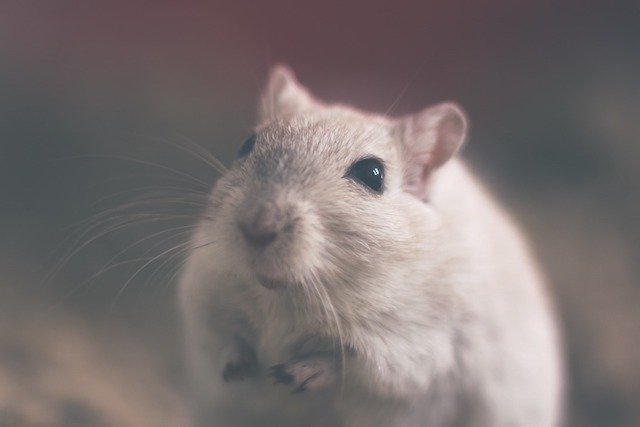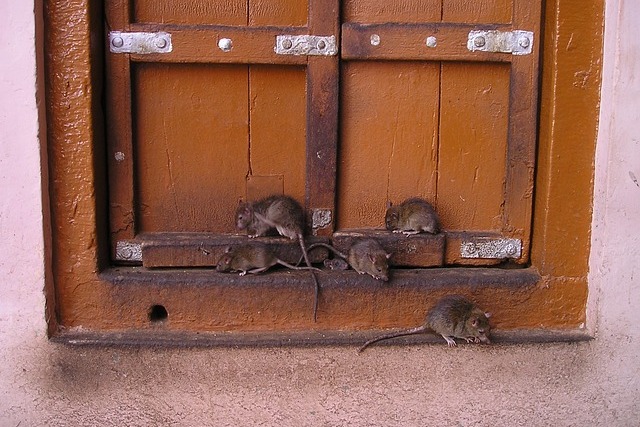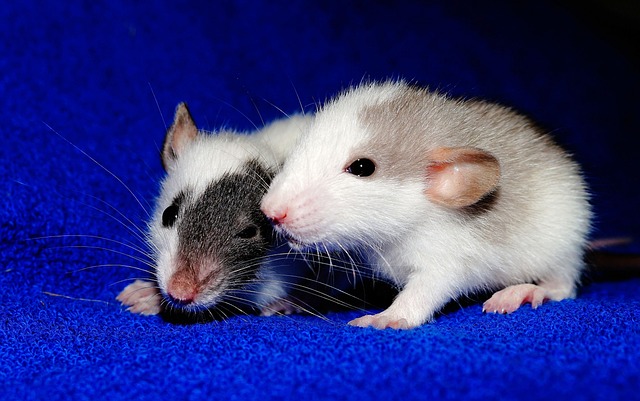Science has identified somewhere around 1.2 million different species on planet Earth. Of all these species, few are as disliked as rats. While some people actually love rats and keep them as pets, and evidence shows that they are quite intelligent, most people are not so forgiving. They are considered disease carriers, pests, and a danger to public safety. However, you may be surprised to learn what goes on in the hidden world of rats.
10. There are about 2 million rats in New York City.

There is a saying that in New York City there is one rat for every resident. In reality, this is not true, and humans are certainly the more numerous species. Does this mean that there are not that many rats in New York City? Not at all. In 2014, New York City was estimated to have about two million rats. While that may not be one rat for every New Yorker, it comes out to be close to the population of Houston.
It's hard to get more recent data, and it's hard to get any precise numbers if you think about how you can accurately count millions of rats, but if you look back in time, their numbers are skyrocketing. In 1950, there were only 250,000.
An increase in the rat population of 800% is certainly something dramatic. It is difficult to say how accurate this number is, at this point it could certainly be much higher than 2 million rats, but it is safe to say that regardless of the population size, New York City is an absolute paradise for the little rodents.
9. Rats eat anything

Rats are known to be voracious eaters. If you work in the food industry, you know that you need to constantly monitor rats because if they get in, they will eat everything they can, contaminate the rest, and potentially put you out of business. This could be restaurants, warehouses, grocery stores, and so on. And if that were the end of it, that might be reasonable. But rats don’t just eat what you think they’re going to eat. Rats eat everything, or at least they’re accused of doing so.
In one case, rats were accused of eating over 500 kilograms of marijuana. That's more than half a ton. This story is also considered a little suspicious, but it's not beyond the realm of possibility. And if you're wondering how much money that is, it probably doesn't matter either, because rats will eat money, too. One rat was found to have eaten about $20,000 from an ATM. He died after it happened, but he died a rich man. Well, sort of.
Rats are also accused of eating 34 kilograms of ketamine, drinking 1,000 liters of booze, and more. Again, the rats may just be convenient guys here, but the police are the ones blaming it, so it's unlikely anyone will investigate.
8. Rats cause tens of billions of dollars in damage every year

If you've had rats in your home before, you've probably noticed the damage they can do. In addition to chewing through food containers, they also burrow through your walls, and their urine and feces can ruin your floors and furniture. A rat infestation in a building can cause a hell of a lot of damage.
It is estimated that in the United States alone, rats cause about $19 billion in damage each year. Back in 1982, the United Nations reported that rats destroyed up to 43 billion tons of food each year, costing $30 billion. Adjusted for inflation, that's about $96 billion today.
7. Experimental rat utopias led to chaos
In the 1960s, a series of experiments known as the Calhoun rodent experiments involved creating what was then a rat utopia, and then mice. John Calhoun wanted to study population density and how it affected the people in that population. The idea was to provide the rats with everything they might need.
Calhoun began his experiment with rats in an outdoor pen, and as the experiment grew, more iterations emerged with more complex setups. He found that even if you give rodents every comfort they could ever want, such as food, water, and shelter in abundance, at some point everything will fall apart.
The rats in his experiment ignored some areas of the environment and overpopulated others. Soon the rats were only carrying on their normal daily routines when other rats were around. They would not eat or reproduce if they were alone. Behavior became erratic and aggressive, with some rats engaging in cannibalism and what was described as "sexual deviancy." Infant mortality rose to 96%. Soon the entire society had collapsed into chaos and squalor.
When Calhoun repeated his experiment with a more complex setup and mice, the same thing happened.
6. Every 48 years, India experiences a rat flood.

Every 48 years in India something called Mautam happens. That's what they call it when the bamboo flowers, then produces seeds, and then dies. The bamboo fruit comes out, and as soon as it does, there's a rat infestation. Black rats are hungry for the sweet bamboo fruit, so when that happens, the rat population explodes.
Once the bamboo dies, the huge rat population must move on to something else, usually any other crops, which can lead to widespread starvation and death.
Even with the bounty on rat tails, 1.5 million rats were killed in 2009, the last rat flood, but it had little effect on the population.
5. The Hanoi Rat Massacre of 1902 was a failed attempt to control rats.
In 1902, Hanoi was under French control. As part of their occupation of the city, the French section was built with a sophisticated sewer system that had not existed before. This was a great pleasure for the local rats, who soon infested Hanoi's sewers.
When Vietnamese rats appeared in French toilets, the population was very upset. Especially since cases of plague were also increasing. Something had to be done about the rats, so the ruling French came up with a plan. A reward was put on the rats, and each rat brought money to the local rat catchers. People went out and started catching them in large numbers. But somehow, instead of solving the problem, the rap population only increased.
It turns out that if you pay people to kill rats, it's much more profitable for them to breed more rats to make more money. The plan backfired horribly, with up to 10,000 rats a day turning into profit, and on some days, double that.
4. Rats can be trained to search and rescue
Rats can get into almost any place you can imagine. They have also been shown to be very smart. While most people don’t bother putting these two things together, that’s not true for everyone. Rats, because of these two skills, are trained to work as search and rescue teams in the event of a building collapse. A small, smart animal that can get into the tightest of spaces is certainly a great asset in an emergency.
A trained rat with a tiny backpack
can be sent into a building that may have collapsed due to an earthquake or hurricane. The backpack contains a tracker, a camera, and a communication device. They can locate survivors and allow rescuers to communicate with survivors and pinpoint their exact location due to the rats' natural curiosity and ability to crawl through hard-to-reach places. They can be trained just like dogs, and learning to track down a living person is not that difficult for them. Rats have already been trained to track down landmines and identify various diseases and humans by smell.
3. Rats fight for survival

It’s not often that researchers use rats and conduct experiments where good things happen to the rats. It just seems to be the norm. One of the most depressing experiments that rats have been subjected to is the drowning rat experiment, conducted at Johns Hopkins University back in the 1950s.
Although the experiments were cruel, the results were also quite interesting. In the experiment, a rat was placed in a bucket of water and the researcher watched how long it took for the rat to drown. It was noticed that most of the rats drowned quickly, even though rats are fairly good swimmers. However, some of them were able to survive for several days. All of the survivors were domesticated rats. It was hypothesized that having had help from others in the past may have given the rats hope that they had a chance of survival.
For the next round, the rats were placed in the water and just before they were about to drown, they were rescued. These rats were held and helped through the near-death experience. The surviving rats were then placed back in the bucket and were observed to float and survive much longer. The rats had hope that they would survive, so they did not give up so easily.
2. Rats can laugh

Pablo Neruda once said that laughter is the language of the soul. If that’s true, then science has apparently proven that rats have souls. You might want to think about that before you set a trap next time. Researchers have shown that rats are ticklish, and they actually laugh when you tickle them, although the sound of their laughter is ultrasonic and can’t be heard by the human ear without assistance.
Tickling is actually very important in neuroscience because of how the brain responds to stimuli, and by studying the reactions of rats, we found that they definitely enjoy it and will encourage people to continue tickling them.
1. Two rats can become 500 million in three years

One thing that makes an animal a pest is how prolifically it can reproduce. Rats are incredibly prolific, which is one of the reasons they can be so dangerous. A pest control company called Rentokil explained to potential customers just how bad rat breeding can be.
Rats reach sexual maturity at four to five weeks of age. Their gestation period is another three weeks. Rats can have a litter of five to a dozen babies. A female rat can produce up to six litters per year.
Even if a wild rat only lives for one year, which is the normal lifespan, that means one rat could produce up to 72 babies. But you also have to remember that those first few litters of rats reached adulthood during the same period and also began to reproduce. As a result, in one year, you could end up with 1,250 rats just from that first pair to breed.
If you stretch your timeline a little bit, break that year into three years, that pair of rats could end up being half a billion. Obviously, that's an extreme example, and there will be predators, disease, competition, and so on, that will reduce the population. But it's theoretically possible, at least biologically, that one pair of rats could become 500 million.













Оставить Комментарий